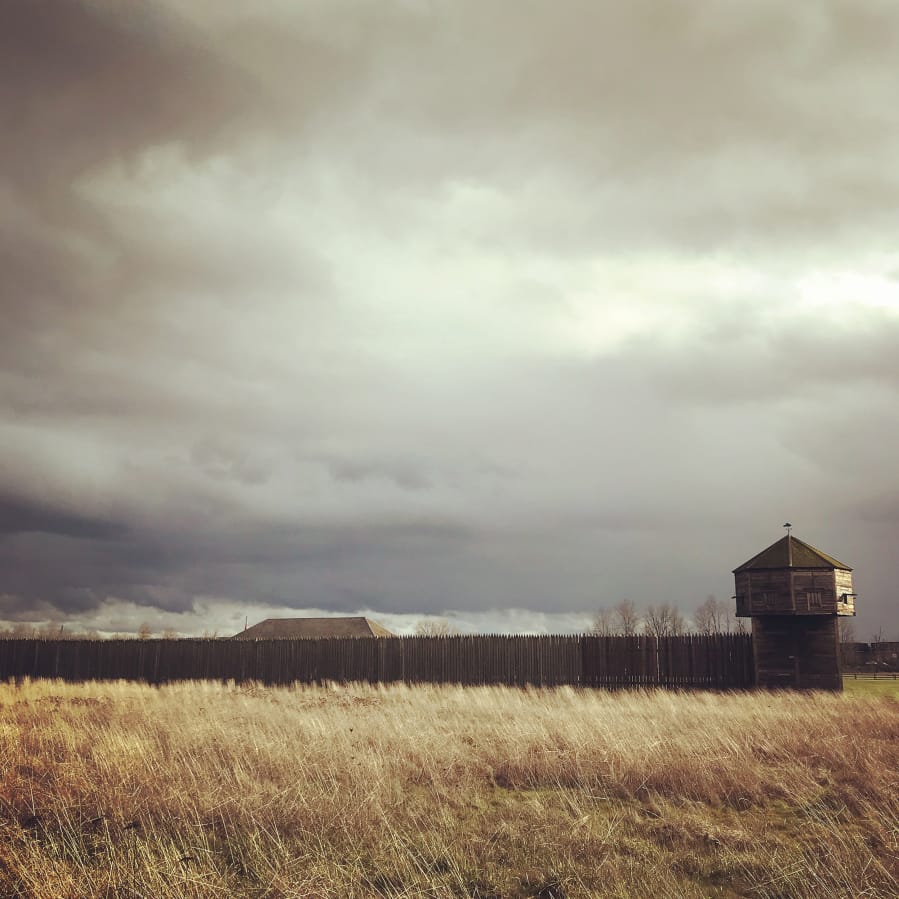This time, Beth Harrington’s assignment really hit close to home.
The Vancouver filmmaker’s new documentary for OPB explores Fort Vancouver during the era of the Hudson’s Bay Company. The 30-minute production will get a free showing Wednesday in the Kiggins Theatre, about a mile from where Harrington filmed at Fort Vancouver National Historic Site.
“I’m an independent filmmaker, but I’ve worked with OPB for 22 years,” Harrington said. “Occasionally, they’ll ask me to do a project. I’ve lived in Vancouver for 22 years, and I’m excited they wanted to do this.”
The Kiggins Theatre showing at 7 p.m. Wednesday is free and open to the public.
The episode of “Oregon Experience” will air on Oregon Public Broadcasting (Channel 10) at 9 p.m. on May 21. It also is available online now at www.opb.org/fort vancouver.
If You Go
•What: Showing of “Fort Vancouver” and Q&A with producer Beth Harrington.
• Where: Kiggins Theatre, 1011 Main St., Vancouver.
• When: 7 p.m., Wednesday.
• Cost: Free.
On The Web
Available now at www.opb.org/fortvancouver
On OPB
9 p.m., May 21, Channel 10, “Oregon Experience”
Harrington weaves a lot of threads into the tapestry that was Fort Vancouver 180 years ago. The arrival of the British trading company in 1825 “is a huge focal point for history in this part of the world,” she said.
The production uses a cast of re-enactors who portray historical figures such as Dr. John McLoughlin.
“McLoughlin is a key figure. He represents the tension between what were the U.S. and British interests at the time, struggling to find some equilibrium.”
But the faces on the film are not limited to people of power and prominence.
“At one point, two-thirds of the people at Fort Vancouver were women or children. We don’t know who most of those people are, because that’s the way history is recorded,” Harrington said.
Diversity at Fort Vancouver was about more than age and gender. It was “a multicultural community that represented more than 30 tribes, including Iroquois and Algonquians from the East, and Hawaiians,” Harrington said.
Northwest tribes that were here long before the Hudson’s Bay Company arrived are represented in the film by current leaders of the Cowlitz, Chinook and Confederated Tribes of the Grande Ronde.
“It was critically important to bring representatives of the many American Indian tribes and native Hawaiians into the story so that they had the opportunity to speak about their connections to this national park, including places here that are sacred to them,” said Tracy Fortmann, superintendent of Fort Vancouver National Historic Site.
Even the Europeans were a diverse mix that included English, Irish, Scotts, Orkney Islanders and French. Intermarriage produced generations of M?tis — or mixed race — Hudson’s Bay employees.
All those people contributed to making Fort Vancouver the hub of the Hudson’s Bay Company’s Columbia Department. It was a vast commercial empire that stretched from present-day San Francisco to Sitka, Alaska, and ranged east to the Rocky Mountains.
“This was a busy place, and the center of activity, settlement and business,” Fortmann said.
These days, Fort Vancouver is a significant archaeological site, and that was a factor in getting the film project off the back burner.
“Fort Vancouver has been on our list for a long time,” said Nadine Jelsing, executive producer of “Oregon Experience.”
“We have touched on Fort Vancouver and John McLoughlin, but we’d never done a full show,” Jelsing said.
Then, when archaeologists started on their 2017 summer dig at Fort Vancouver, “It really sparked our interest. It was the catalyst,” Jelsing said.
The summer dig was the first thing Harrington shot, although it wound up as one of the film’s final scenes.
“We wanted to catch that while we could,” Harrington said. “We hadn’t formulated the film, but thought we’d better shoot while we had the opportunity.”
The National Park Service staff also provided access to shooting locations inside the replica stockade.
The re-enactors were Park Service volunteers, wearing the costumes in which they portray 19th-century residents during living-history programs and events at Fort Vancouver.
Scott Irvine, a park guide at Fort Vancouver, coordinated the volunteer re-enactors during three days of shooting in December and January. He also cast himself in a couple of scenes … although it’s not what you’d call a starring role.
“I had a role as a steward in the dining room and in the kitchen,” Irvine said.




